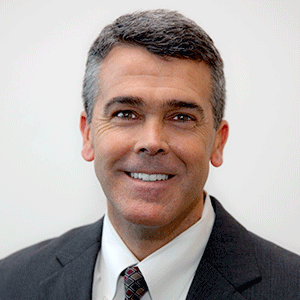 David Farrell
David Farrell
Vice President of Subacute Services for Telecare Corporation, Alameda, CA
The following is an excerpt from David’s journal, the first chapter in Doing Better Together: Long-term Care Leaders’ Guide to High Performance, by Cathie Brady, David Farrell, and Barbara Frank, Health Professions Press 2017. David will be providing an Intensive on Doing Better Together at PN’s Conference.
We made a lot of changes during my 6 months as administrator at a critical access nursing home and as a result, our performance improved across a broad base of measures. There are close to 70 documented changes but to really get the core root cause(s) of the positive gains that we achieved, one must understand the connection of the organizational changes, the sequence of how they were rolled out and the leadership paradigm behind the changes. The quality outcomes that nursing homes get rely heavily on the leaders’ actions, their words and their thoughts.
What strikes me now, and it was apparent to me throughout my tenure there, was how much I communicated what we were doing and what I was thinking with the staff here. From the very beginning, I was transparent, honest and respectful. I conscientiously and thoughtfully kept people informed of what was happening and why.
At the very start, at the first community meeting, we talked about our label as a “Critical Access Nursing Home,” and the path that we were going to take to not just keep the place open, but make it a great place to live, to recover and to work. From that point on, we discussed the strategic plan and the changes we were making to execute it.
I used multiple means to keep the staff informed including community meetings, neighborhood huddles and written notes to the staff. The notes made me vulnerable. This leadership approach, while well documented in the literature, is risky. Consider that the more staff knows about the leader’s plans then the more staff will know if the plan failed…or if I failed. This level of leadership transparency increases the number of people that I am now accountable to. But telling people what we did and what we plan to do next also increases my likelihood to do what I said I would do. The notes literally stick my proverbial neck out.
In between the notes were my rounds. And the rounds allowed me to connect personally and explain the rationale behind each change more thoughtfully. I made time for the rounds and I slowed down to try to see everyone. On certain days I handed out fruit and talked with small groups of staff about issues and possible solutions. From 2:30 pm to 3:30 pm, during the change of shift, I always made myself available and seen by people. Staying near the time clock worked best. I made my presence felt.
I personally invested in the staff. I raised the level of communication higher than at any home I have managed in my career. I was aware that I was doing it, saw the immediate benefits, and did it more. I experienced, just as the leadership authors and QI gurus teach, leaders who take the time to communicate and involve their people, and do so in a sincere way, reap great outcomes.
My paradigm is one of respect, admiration and gratitude of the people who work here. The level of communication that I raised up to reflects that I think the staff is smart, motivated and compassionate. Explaining the critical access home study, outlining the strategic plan, sharing data and communicating the next steps, are actions that support this paradigm. As I self-reflect on my leadership, I have always had this paradigm. But unlike my stints at other nursing homes, here I systematically communicated with the staff and tripled the volume of the communication that I put out there.
I paid the staff here the ultimate compliment. By communicating and sharing everything with them, I showed them that I trusted them and demonstrated how valuable I thought they were. Clearly, being this transparent led to good feelings and accelerated the relational coordination among the staff.
Relational coordination [1](how well we work together) was enhanced because the communication with the staff allowed for a safe feeling of predictability. People feel less stressed about future events when they are kept abreast about what’s about to change.
In the end, it worked. The focus on person-centered care and being a better leader…it worked again. I learned so much. I feel like I did everything that I could and it was one of the best experiences of my career.
[1] Relational Coordination posits that when staff communicate and relate well, outcomes are better in care, human resources, and other organizational measures (Gittell 2009).


